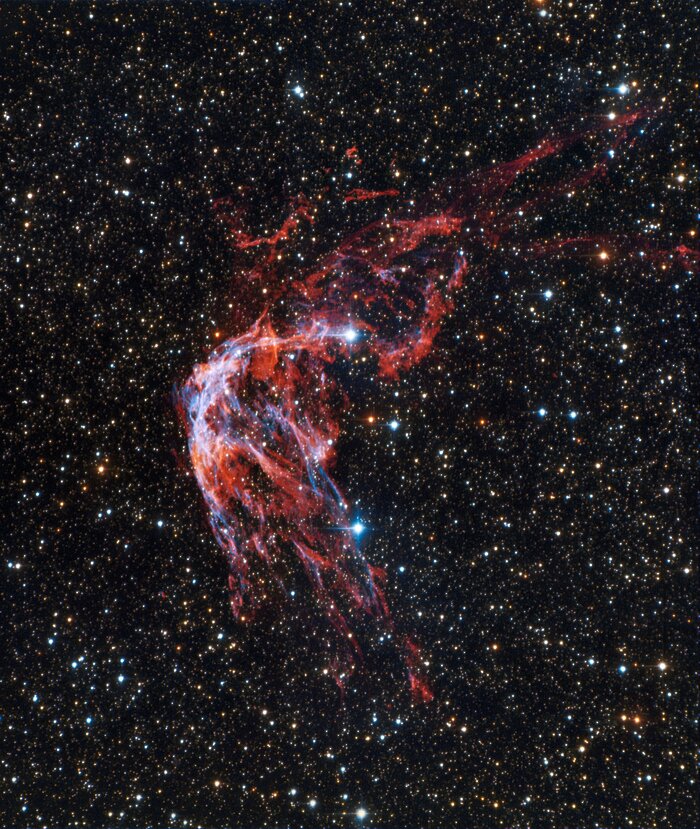Eco del pasado
El Telescopio SMARTS de 0,9 metros del Observatorio Cerro Tololo (CTIO), un Programa de NOIRLab de NSF, capturó un eco del pasado en esta bellísima Imagen de la Semana. La forma de RCW 86 —una nebulosa gaseosa— es literalmente una sombra de lo que fue: el remanente gaseoso de una supernova. Hace unos 11.000 años atrás, una enana blanca —núcleo de una antigua estrella— se volvió demasiado masiva y explotó espectacularmente convirtiéndose en una supernova de tipo Ia. Las ondas expansivas resonaron en el espacio, lanzando el gas hacia el exterior, momento en que se formó la “burbuja” de múltiples capas que vemos hoy. Además de ser un impresionante objeto estelar, sus restos pueden haber sido creados por la primera supernova de la que se tiene registro histórico, y que fue observada por astrónomos chinos en el año 185 d.C. en la misma zona entre las constelaciones de Circinus y Centaurus.
Créditos:CTIO/NOIRLab/NSF/AURA/T.A. Rector (University of Alaska Anchorage/NSF NOIRLab)
Image processing: T.A. Rector (University of Alaska Anchorage/NSF NOIRLab), M. Zamani (NSF NOIRLab) & D. de Martin (NSF NOIRLab)
About the Image
| Id: | iotw2236a |
| Idioma: | es |
| Tipo: | Observation |
| Release date: | 7 de Septiembre de 2022 a las 12:00 |
| Size: | 1723 x 2041 px |
Sobre el Objeto
Fondos de Pantalla
Coordenadas
| Posición (AR): | 14 40 19.60 |
| Posición (Dec): | -62° 39' 44.79" |
| Campo visual: | 11.53 x 13.65 arcminutes |
| Orientación: | North is 179.6° left of vertical |
Colores y Filtros
| Banda | Longitud de Onda | Telescopio |
|---|---|---|
| Optical G | 475 nm | SMARTS–GSU 0.9-meter Telescope Tek2K |
| Optical OIII | 502 nm | SMARTS–GSU 0.9-meter Telescope Tek2K |
| Optical R | 626 nm | SMARTS–GSU 0.9-meter Telescope Tek2K |
| Optical H-alpha | 656 nm | SMARTS–GSU 0.9-meter Telescope Tek2K |
| Optical I | 773 nm | SMARTS–GSU 0.9-meter Telescope Tek2K |

